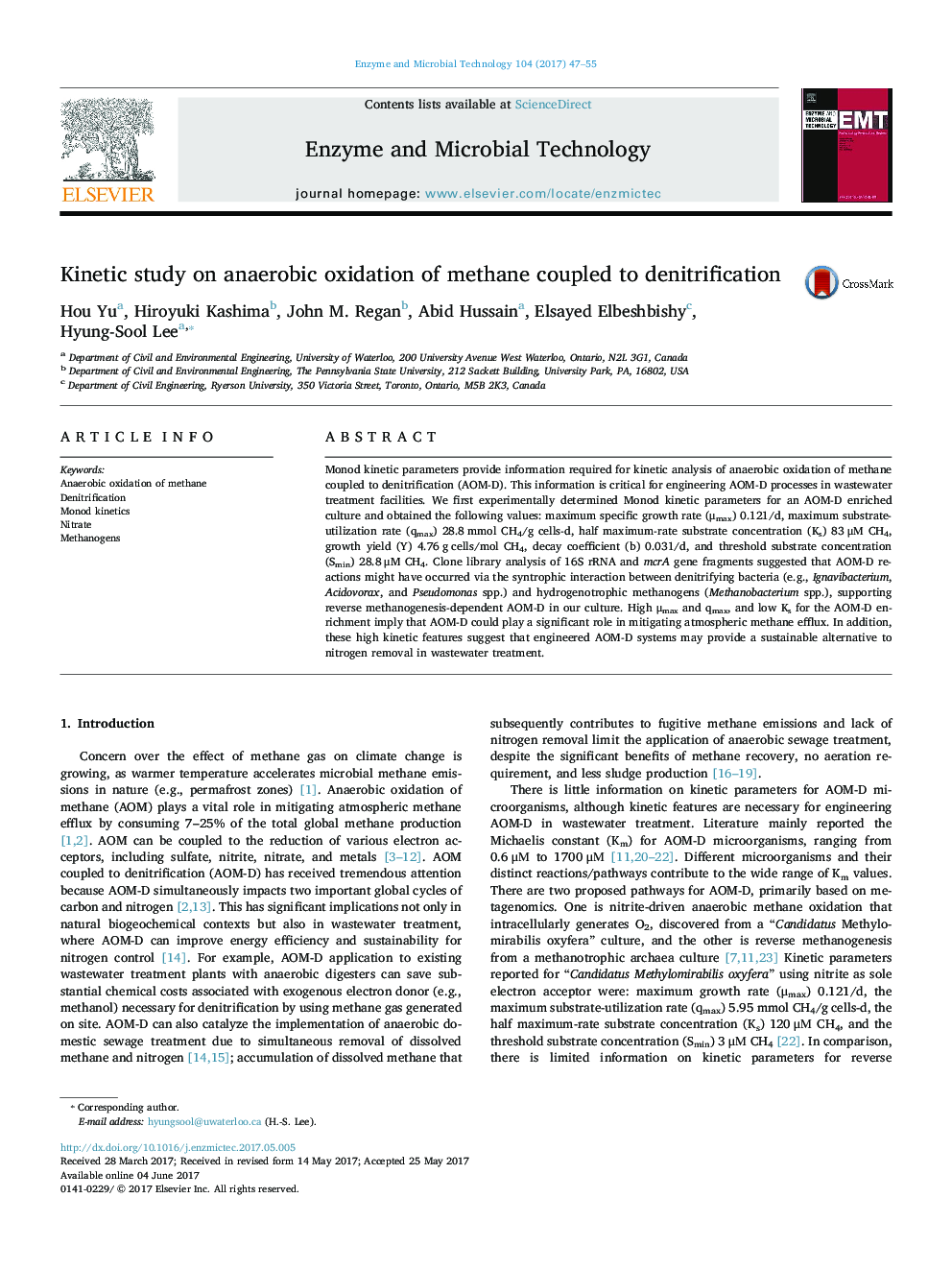| Article ID | Journal | Published Year | Pages | File Type |
|---|---|---|---|---|
| 4752705 | Enzyme and Microbial Technology | 2017 | 9 Pages |
â¢Kinetic parameters for AOM-D were estimated experimentally.â¢The maximum specific growth rate of AOM-D culture was 0.121/d.â¢The maximum specific substrate-utilization rate was estimated at 28.8 mmol CH4/g cells-d.â¢The half maximum-rate substrate concentration was determined at 83 μM CH4.â¢The threshold substrate concentration was 28.8 μM CH4.
Monod kinetic parameters provide information required for kinetic analysis of anaerobic oxidation of methane coupled to denitrification (AOM-D). This information is critical for engineering AOM-D processes in wastewater treatment facilities. We first experimentally determined Monod kinetic parameters for an AOM-D enriched culture and obtained the following values: maximum specific growth rate (μmax) 0.121/d, maximum substrate-utilization rate (qmax) 28.8 mmol CH4/g cells-d, half maximum-rate substrate concentration (Ks) 83 μΠCH4, growth yield (Y) 4.76 g cells/mol CH4, decay coefficient (b) 0.031/d, and threshold substrate concentration (Smin) 28.8 μM CH4. Clone library analysis of 16S rRNA and mcrA gene fragments suggested that AOM-D reactions might have occurred via the syntrophic interaction between denitrifying bacteria (e.g., Ignavibacterium, Acidovorax, and Pseudomonas spp.) and hydrogenotrophic methanogens (Methanobacterium spp.), supporting reverse methanogenesis-dependent AOM-D in our culture. High μmax and qmax, and low Ks for the AOM-D enrichment imply that AOM-D could play a significant role in mitigating atmospheric methane efflux. In addition, these high kinetic features suggest that engineered AOM-D systems may provide a sustainable alternative to nitrogen removal in wastewater treatment.
